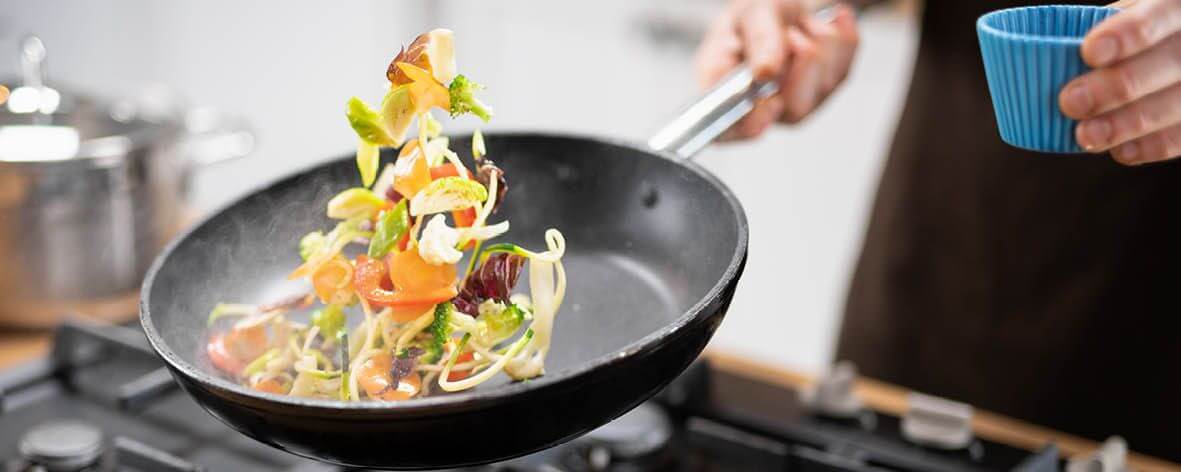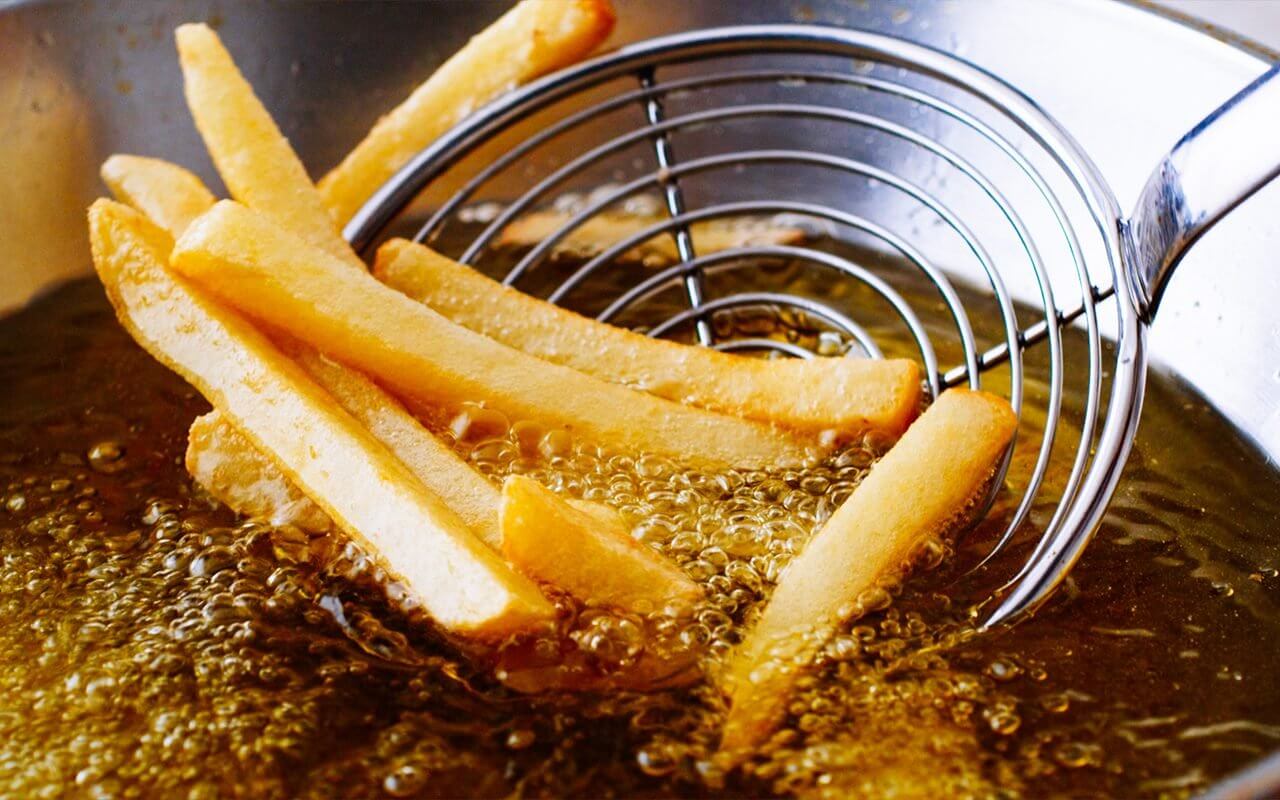TABLE OF CONTENTS
In most kitchens, homeowners consider skillets as stovetop heroes. The kitchen equipment is usually at the centerpiece of all the cooking sets due to their versatility when handling or using them for cooking. For a skillet to take the beating and keep offering top cooking results without any issues, it should come with effective, versatility, and durability features.
These kitchen equipment offer the appropriate and dependable ally in your home when preparing any meal, either a standard weeknight dish or haute cuisine. We've got five different skillet cooking techniques; it'd be good to learn when looking to use skillets to prepare your meals. This article highlights the top 5 skillet cooking methods.

1. Sautéing
It's one of the most common and essential kitchen techniques every homeowner should learn. Sautéing majorly involves preparing your food by frying it in a small amount of oil. When using this cooking method, you'll need to toss the food in a pan with hot oil. After tossing the food in the pan, it tends to move around in the hot oil as it cooks. Most skillets come in designs that allow the tossing of food particles inside them, as they won't get out.
It'll be essential to ensure the skillet is hot before adding oil when sautéing. You can easily check if the skillet is hot by splashing a few water drops on it and checking if they evaporate upon hitting the pan. After ascertaining the skillet is hot, add the right amount of fat and swirl the oil around until you coat the whole pan surface with the fat. Before adding any food to the pan, you can test by adding a small piece to check if it sizzles before adding the rest.
When you seek great flavors from any natural sugar like caramelized onions, sautéing is appropriate. The high temperatures above 280 Fahrenheit allow the Maillard reaction. This reaction allows the sugars in food to caramelize, making the browned look and wonderful flavor you've been craving on your meals.
It'll be imperative to understand that you won't require numerous stirring when sautéing. However, you'll need to use your wrist to flip up the skillet quickly once your food has cooked on one side. This technique may require some practice; however, after understanding it, sautéing adds the appropriate cool factor to your cooking.
You can make various meals using this technique, including a stir-fry, but you'll have to stir more frequently on this meal type. Importantly, when sautéing on a nonstick skillet, it'd be imperative to use a low to a medium heat source. Using higher heat sources increases the degradation of your pan's nonstick coating. Lastly, the cast-iron and stainless steel skillet set offer the right options for higher heat sources.

2. Searing
Searing involves steps similar to sautéing, but this technique requires having your food in fat with slightly higher temperatures. This cooking method generally works well for meat and flesh. When preparing your meat using this method, the outside becomes brown & crispy, while you'll get a juicy and moist inside part.
Searing is appropriate for all types of meats, such as pork chops, thick-cut steaks, chicken breasts or thighs, and any meat pieces decently cut. While using this technique, you can achieve excellent pieces like tasty skillet chicken tacos from marinated chicken breasts.
This cooking method is usually straightforward, where you'll have to cook your meat on high heat until it turns brown on one side then flip on the other side. Once you've seared the other side, your meal is ready for serving, or proceed to an extra step if you want to continue with your preparations. Searing is often the final step before serving your meal in most cooking processes. For example, most individuals consider searing a steak in a sous-vide to get the appropriate flavor.
After searing your food, you'll get some flavorful bits of the meat or food stuck at the bottom of your skillet. It's one of the favorite chef's moves commonly known as deglazing. Deglazing involves adding an astringent liquid such as wine to the pan while still hot. While adding the liquid, you can scrape these flavorful bits off the skillet and quickly achieve an excellent base for your sauce.
Alternatively, you can use this cooking method before another step, such as braising. It helps add more flavor to the meal as searing will impact the taste and flavor of your meat or food. Importantly, you easily distribute these flavors and tastes throughout the meals while you're braising.

3. Braising
It's a simple technique that most chefs or individuals use to further cook meat they've already seared. Braising involves cooking this meat in specific liquids such as broth. This method is similar to stewing; the main difference is that when using this method, the liquid won't cover up to the meat's top when braising. The cooking method allows you to distribute your favorite flavor evenly throughout your meat pieces and whole meals.
When braising, you can mix a wide range of foods, like braising beef ribs with mushrooms, potatoes, onions, and carrots. When mixing these foods, you're sure to achieve a greater combination of your favorite flavor. The method works best when using a large cast-iron skillet, the sauté pan, or the skillet's cousin when braising. The sauté pan will be the appropriate tool for braising over a skillet due to its straighter edges and larger volume.
It's important to understand that when braising, you'll begin the cooking procedures in a cast-iron skillet, Dutch oven, or sauté pan you place over in an oven. It'll be imperative to cover the cooking vessels while cooking to prevent the liquid from evaporating; thus, keeping your meat juicy.
It's important to note that you can also use a stainless steel skillet for braising since they're usually oven-safe. More so, you can start braising your meat in a braise, then later transferring to another dish. Nonetheless, you need to ensure you begin the braise directly in a stainless steel sauté pan or large cast-iron skillet.

4. Frying
One of the greatest skillet cooking techniques is frying. When having your skillet frying, it's important to understand that you'll be having shallow frying and not deep frying. It'll be essential to have small enough cooking batches to produce the same skillet results as when frying deep-fried foods. Fried foods come with one of the best flavors & aromas, which you can also enhance by adding appropriate ingredients.
You'll need an appropriate amount of oil to fry the food appropriately when frying. When having your skillet frying, it's vital to distinguish between shallow and deep-frying. For deep frying, you'll have to cover the entire food with oil, while when having shallow frying, the oils only cover up to half the food.
The appropriate tools for skillet frying will be the stainless steel skillet, as it has a high heat tolerance. Therefore, you can fry your chicken or other small pieces of meat without worries. Importantly when frying, you'll have to turn your chicken or food frequently to ensure that the meal cooks on all sides and helps achieve a perfect crunch.

5. Baking
When looking for the appropriate option for baking and achieving great results, a skillet offers the appropriate. Using the proper procedure and ingredients, you'll get excellent results from your foods. However, when using a skillet for baking, it's imperative to ensure that the skillet you're using has an oven-safe handle. You can check for this by looking at the instructions from the manufacturers, as not all pans are suitable for baking.
Importantly, using your skillet for baking, it's imperative to consider choosing a cast iron or stainless steel pan, as it offers a safe cooking option. Having a skillet on your oven while baking makes you resemble a kitchen wizard. This oven equipment is essential for making cornbread because the pan's thickness allows for an even distribution of heat on the food.
You can use the skillet for baking different foods, from casseroles, frittata, and giant skillet, cookies to apple pie. However, before using the skillet for your baking purposes, it'll be appropriate to ensure you grease your pen well. Greasing the pan is vital to prevent sticking before the baking procedures.
In addition, when baking on a skillet, you can choose your appropriate fat and paper towel to ensure you cover the whole pan with oil. Cooking experts advise that you shouldn't use excess oil on the pan when applying oil to the pan. Instead, you can opt for a thin oil layer on your pan surfaces, ensuring your oil covers or coats all the parts that food will be touching on the pan to prevent sticking.
Bottom Line
Ultimately, most individuals want versatile cooking techniques, and skillet offers the appropriate option. The skillet provides versatility, and you can achieve five different cooking methods. Commonly the technique allows for sautéing, searing, braising, baking, and frying, where you can choose the appropriate method suiting your cooking needs and preferences. Importantly, before using your skillets for the different cooking needs on your oven, ensure they are oven-safe to enhance effectiveness and safety when cooking.























Leave a comment
All comments are moderated before being published.
This site is protected by hCaptcha and the hCaptcha Privacy Policy and Terms of Service apply.